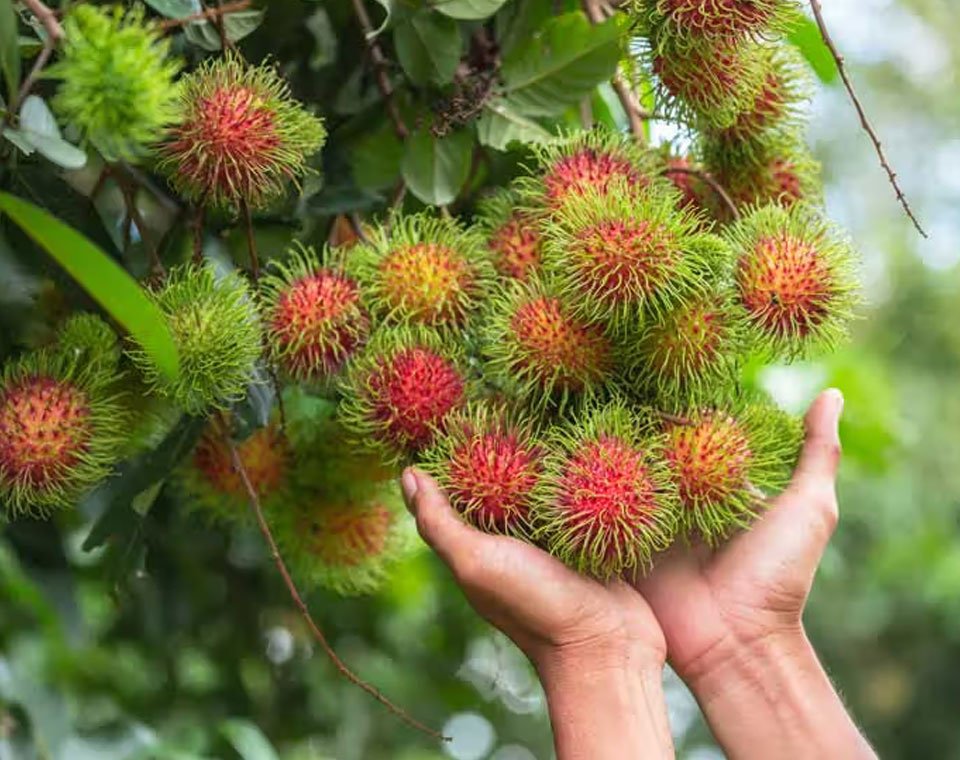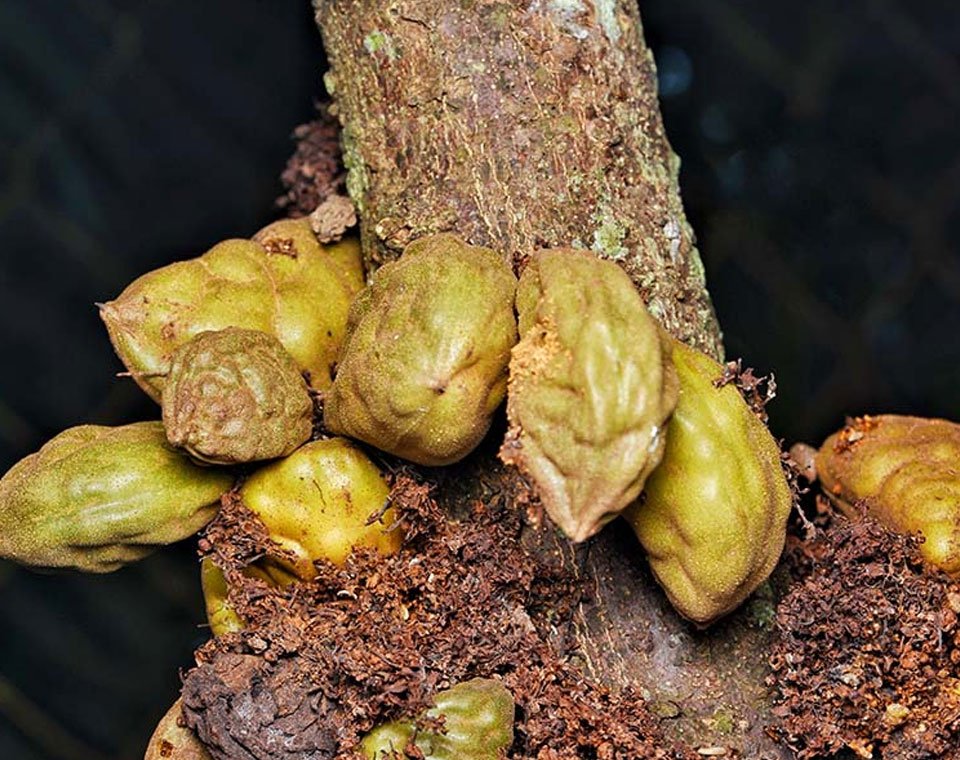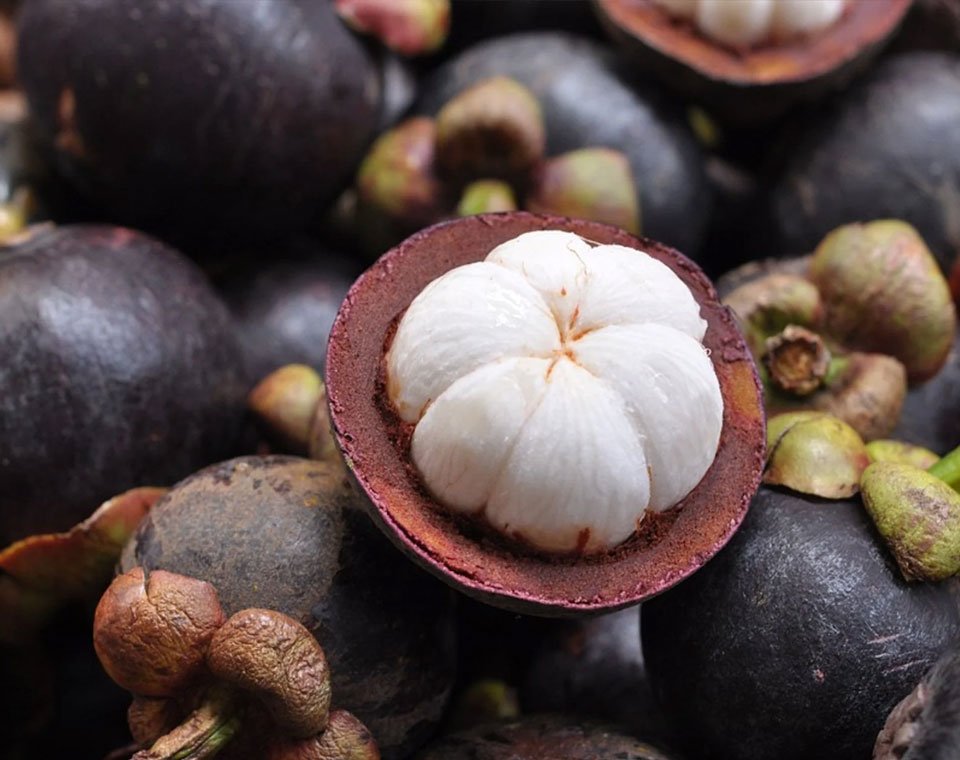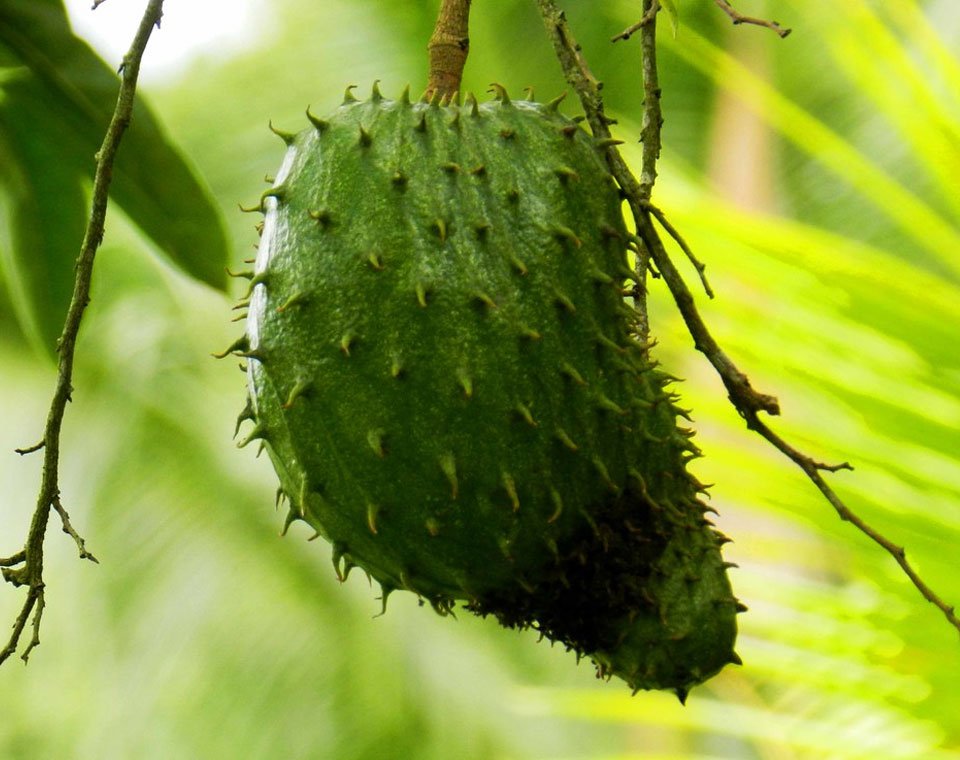Fruits
- Home
- Fruits
Fruits

Rambutan
Although it looks like a kids’ toy from the ‘90s, the rambutan is edible. To open a rambutan, cup it in your hands and find a groove between the spikes with your thumbs. Push downwards and then outwards to prise it apart. Once through the fuzzy outer shell, you’ll find a glistening lychee-like fruit. Pop it whole in your mouth but make sure you don’t eat the seed.

Thambili
Also known as the King Coconut, the orange thambili is one of the most prized fruits of Sri Lanka. Coconut picking is a dangerous job: pickers use a rope to tie their legs together and winch themselves up the long trunk of the trees. Street sellers will cut an opening for you so you can drink the juice. If you ask nicely they’ll even cut the nut in half and fashion you a spoon out of the hard outer shell so you can scrape up the sticky goodness inside. King coconuts are used in ayurvedic medicine here and are known as a source of carbohydrates, vitamin E, iron, calcium, and phosphorus. Make sure you ask for a ripe one.

Cashew Apple
The cashew nut is a seed. It grows underneath the cashew apple – effectively the stem of the nut – that hangs from the tree. The relatively unknown cashew apple contains five times more vitamin C than an orange but is easily damaged so harder to export. The cashew nut grows in a shell that is toxic to the skin, which is why it’s only in the last few centuries that the nut overtook the apple in popularity. In Brazil – where the Portuguese colonizers originally imported from the cashew tree – the nut is regularly discarded in favor of the apple. In Sri Lanka, the cashew is called the kadju, and you can find the apples sold by street vendors in villages around Batticaloa.

Naminam
Naminams look more like a fungus than fruit and hangs off the bark of the naminam tree in a similarly moldy fashion. But the wrinkly fruits are much tastier than you might expect; giving off a sharp, sour tang. Perhaps because of their odd appearance markets don’t tend to stock these – you’ll be more likely to find them on the roadside or in someone’s yard.

Mangosteen
The mangosteen is a segmented fruit contained in a purple rind. It’s known as one of the tastiest Sri Lankan fruits. It has immune system-boosting qualities and is used to make health drinks, tablets, and powders. The rind can also be steeped in water to make tea.
To open press firmly on the outside of the shell and twist until it breaks apart.

Anoda
The anoda also goes by the names sugar apple, sweetsop, and custard apple. These names are fairly representative of the taste, while the flesh is soft, grainy, and sweet. You can buy them in Sri Lankan supermarkets or find them growing on the beach just south of Mount Lavinia Hotel.

